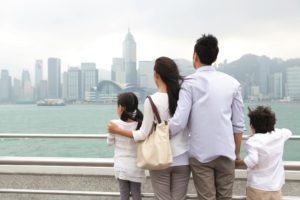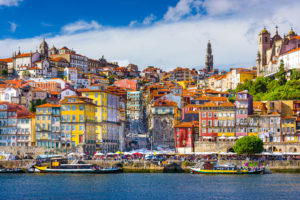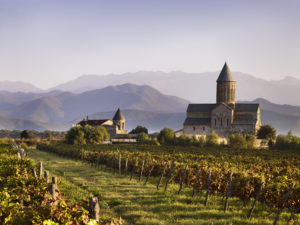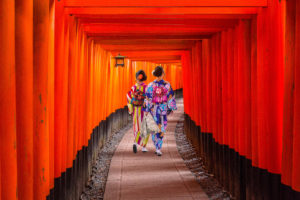Best in Travel 2019
MY DNA AND ME
By Maria McKenzie (pg.202)
In a world where we’re increasingly virtually connected, we can feel disengaged from our roots. But thanks to developments in genetic testing and accessible historical records, travellers are finding it easier than ever to pack a bag and journey back to their origins, forging stronger connections with people and cultures along the way.
All travellers are curious – it’s what keeps the wanderlust alive. The recent rise in home DNA kits has spurred on explorers to delve into their cultural heritage, planning trips around the movements of their ancestors before them. Retracing your ancestors’ footsteps is an adventure replete with surprises. Be prepared to uncover corners of the globe you never knew existed, or travel to familiar destinations and see them in a new light. This very personal journey could find you on a ferry to a remote Scottish island in search of a long-lost relative, or standing in front of your great grandmother’s childhood home in the centre of New York City. Be they new experiences or not, a personal connection can’t help but change your perspective of a destination, and discovering kinship with new people and cultures will also give you an invaluable travel souvenir: a new-found identity. Of course, the trail may not always be fruitful, but the quest is part of the fun – who knows what exciting experiences you may have and who you may meet along the way? In a bid to find travel inspiration in the past, we asked six members of the Lonely Planet family to take a DNA test and plan a trip based on the results. Wherever they end up, we’re sure it’ll be one interesting ride.

Young family enjoying the beautiful scenery of Victoria Harbor, Hong Kong © Lane Oatey / Blue Jean Images / Getty Images
1. Portugal
Right after finding out my DNA results and discovering I have Portuguese blood in me, I booked a ticket to Portugal to explore this beautiful land my ancestors once walked. When you discover that a part of you is found in a place you have never been to, you automatically feel a pull to it. It’s like going on the ultimate global treasure hunt of self-discovery.
- Kristen Sarah, Canadian, Lonely Planet
Trailblazer, blogger and YouTuber
41% Italian, 21.4% broadly European, 17% British and Irish, 9% French and German, 6% Norwegian, 3% Iberian, 1% Balkan, 0.4% Finnish, 1% Western Asian and North African, 0.1% East Asian and Native American, 0.1% Sub-Saharan African.

Porto, Portugal old town skyline from across the Douro River. ©ESB Professional/Shutterstock
2. Georgia
I’ve long heard rumours of having distant relatives living somewhere in the Caucasus. The more I read up about Georgia, the more I spot photographs of local people who have a degree of – how should I put this? – ruddy-cheeked, wavy-haired familiarity. There’s much I’d love to experience in the country, from sci-fi architecture in Sovietera Black Sea resorts to winemaking traditions that can be traced back to the Romans. Finding out my results has underscored how the human urge to travel has made so many of us more diverse than we might realise.
- Peter Grunert, British, Group Editor Lonely Planet magazines
72% North & West European, 24% Irish, Scottish and Welsh, 2.2% Iberian, 1.1% West Asian

Vineyard and Alaverdi Cathedral with Caucasus Mountains in background. ©Andrew Montgomery/Lonely Planet
3. Japan
I had 1% Korean Japanese show up in my DNA results. My entire family was shocked – we don’t know if it was my mother’s side (mainly Middle Eastern) or my father’s (Eastern European/Russian). Now that I know my family roots, there’s a different sense of what makes me, me. I hope to see similarities between myself, my interests and habits, and the locals I meet. I may walk down a street and distant cousins may walk past me; I’ve never felt that before.
- Siya Zarrabi, Canadian, Lonely Planet Trailblazer, travel videographer and blogger
46% Western Asian, 49% European (Ashkenazi Jewish), 2% Iberian, 1% Korean Japanese, 1% North African, 0.5% South Asian, 0.5% Native American

Women in traditional japanese kimonos walking at Fushimi Inari Shrine in Kyoto, Japan. ©Patryk Kosmider/Shutterstock
Content supplied by Lonely Planet


